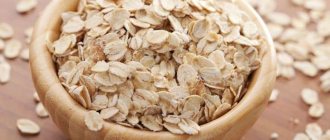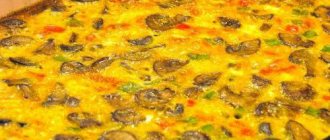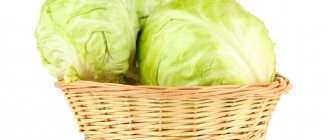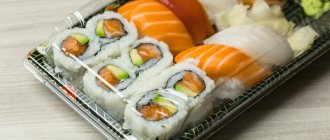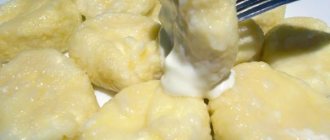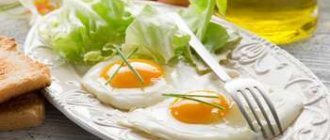This article is about how to count calories correctly and not make mistakes.
By eating by eye, we get results by eye.
Why can't you lose weight or can't gain weight? Do you think you eat like a sparrow when you're trying to lose extra pounds, or like a hungry wolf when you're trying to gain weight? If there is no result from the diet, then your estimate of calorie intake is incorrect. When asked, “How many calories do you get per day?” - you won't have an exact answer.
People tend to underestimate their intake when dieting and overestimate it when they want to gain weight. In this study, people's error in determining their caloric intake on a diet without calorie counting was 50%. Think about it!
Counting calories gives an objective picture of your diet. Yes, it is not 100% accurate, but this is not necessary. At least it is more accurate than by eye, palm, handful or glass.
Counting calories is easy, but there are some nuances. We'll talk about them. How not to make mistakes and take into account the really important details in order to manage your weight as accurately as possible.
It can be difficult at first because you may not be able to correctly count the correct amount of calories in foods right away. The calculation itself at the beginning of the journey will take a lot of time and search, and this can be annoying. After a few weeks of self-monitoring, you will become a pro at estimating the calorie content of foods.
What is needed for counting
People are divided into two types:
- Those who count calories
— And those who don’t count calories.
#1 – You can’t do without a kitchen scale
It is very difficult to judge by eye the weight of, for example, two pieces of meat of approximately the same size. A lean piece will weigh more than a sinewy piece with a bone. The difference can be twofold.
Let's not deceive ourselves or try to guess the weight. The accuracy of the kitchen scale weighing method will be the best way to determine the weight of food.
If you don’t have kitchen scales, you can order them on wildberries, amazon, aliexpress, mvideo, eldorado and other online stores. Read reviews and buy the model you like. This will be a good investment in your own health.
#2 – Calorie counting apps will make your life easier
Of course, you can write everything down in a notebook or constantly look at calorie tables, but apps will make the process easier and more interesting. More on this below.
#3 - Patience
Patience will also come in handy at first. Don't be discouraged if you find it difficult at first or if the counting takes a long time. At first we don’t like any unfamiliar task, then we get involved and begin to find our own thrill in it.
How to Count Calories in Ready Meals: 6 Steps
Counting calories in a complex dish is actually not that difficult. You just need to figure it out once, and then follow this principle.
If you have some favorite dish that you always cook according to the same recipe with the same amount of ingredients, then you can count its kbju per 100 grams just once and enter the data into the counter. From now on, all you have to do is weigh the portion and enter it into the application, and then use the ready-made data. How simple!
Favorite dish
To do this you only need to take a few steps:
Step 1
Weigh each ingredient individually and add it to your calorie counter. The program will calculate how many calories, proteins, fats and carbohydrates are in a dish. Write down this information.
Step 2
Before you start cooking, just in case, weigh the dishes where you will put all the food - a saucepan or frying pan. This is necessary so that the dish does not have to be shifted when weighing. All you have to do is weigh the dish and subtract the weight of the dishes - this way you will find out the weight of the product.
Step 3
Now you know how much your dish weighs. To find out the number of calories in 100 grams, divide the total calorie content by the weight of the dish , and then multiply the resulting amount by 100 .
Step 4
the same with the rest of the macros: proteins, fats and carbohydrates .
Step 5
After you have calculated the quantity of food per 100 grams, enter this data into the calorie counter .
Step 6
Now all you have to do is cut off a piece of the dish, weigh it and enter it into the counter . The program will automatically calculate the number of calories, proteins, fats and carbohydrates per serving.
What you need to know
Nutrient Calories
You need to remember that the calorie content of foods consists of the calorie content of the macronutrients that make up them - these are proteins, fats, carbohydrates and fiber.
Table 1. Energy value of food macronutrients
| Amount of energy | |
| 1 g protein | 4 kcal |
| 1 g carbohydrates | 4 kcal |
| 1 g fat | 9 kcal |
| 1 g fiber | 1.5 kcal |
| 1 g alcohol (alcohol) | 7 kcal* |
*Please check the calorie content of a specific alcoholic product, as... it is an alcohol-containing solution.
In fact, these caloric values are average, but these numbers are enough to correctly estimate the energy intake.
Two apples from the same tree may have different caloric content and composition of proteins, fats, and carbohydrates. However, this difference can be neglected. No one will take their food to the laboratory to accurately find out the macro and micronutrient composition of food.
People have long used the method of counting calories for the purpose of gaining weight and losing weight. A large number of studies prove its effectiveness. You can easily count the caloric content of nutrients, as in the table above.
Dry and raw product
In what form should food be weighed - raw or cooked? Dry and cooked foods have the SAME calorie content, but DIFFERENT weight due to the water they contain.
When cooked, cereals take up water, increasing in volume; meat, on the contrary, releases water during heat treatment, decreasing in size.
For example, buckwheat absorbs water when cooked and increases in volume by about 3 times. Add 100 g of buckwheat, boil it and get 300 g.
The calorie content of buckwheat is 330 kcal per 100 g. After cooking, we get three times more product from water, which has zero calorie content. Thus, the calorie content of buckwheat cooked in water will be 110 kcal per 100 g.
Please be aware of this difference. If you boil a whole pan, then when weighing the portion, divide the calorie content by 3 to get the correct numbers.
The situation with meat is the opposite. Take a piece weighing 200 g and fry it in a frying pan. The meat shrinks, getting rid of water, and loses weight by almost 2 times. Let's assume that when baking we got 100 g of the dish.
The calorie content of lean pork is 250 kcal per 100 g. When baked, we will get the same calorie content, but already in 100 g.
Don't count the meat as it's cooked. Your fantasies about not getting enough protein are unfounded. Calculate the raw weight or multiply the weight of the finished product by 2, as in our example.
Don’t be lazy and weigh once the weight of dry cereals and the resulting porridge from it, as well as the weight of raw and cooked meat. Do this for each cooking method (cooking, frying, baking) you use to find out exactly how much the food is reduced or increased. Next, simply multiply or divide the weight of the finished dish by the resulting coefficient.
Another example - dry rice weighing 200 g boiled in water to 440 g (increased 2.2 times). To calculate the KBJU for an 80 g portion of boiled rice, I will divide the KBJU for dry rice by 2.2.
The calorie content of dry white rice is 344 kcal per 100 g. 100 g of boiled rice will contain 344/2.2 = 156 kcal. And in a serving of 80 g there will be 156 x 0.8 = 125 kcal.
Everyone cooks differently. The more water you add to the cereal, the more it will boil. The longer you cook pasta, the more water it absorbs. Therefore, everyone will have their own coefficients.
Nuances when weighing products
When weighing fruit, consider the weight of the peel. For example, in bananas it makes up a significant part - a third of the fruit; in pomegranate, the seeds and peel weigh more than half of the total mass. Fruits such as apples can be counted whole. The seeds and peel make up less than 10% of the fruit's weight.
We weigh chicken without bones, cottage cheese without packaging, eggs without shells, oranges without peel, etc.
With experience, you will understand what to consider and what not to consider.
About the system error
Even with a permanent error, such as not accounting for the raw/cooked meal difference, calorie counting will still work . If your weight does not change, you will simply adjust your caloric intake.
For example:
I want to gain more and I don’t know that when rice is cooked, it takes in water and swells 2.5 times. I eat a 120 g portion of rice every day, I count calories and BJU, as for rice weighing 120 g. But my weight does not change, and I think that I am overloading on carbohydrates.
In the example above, we already calculated the calorie content of dry white rice. It is equal to 344 kcal per 100 g. According to my calculations, I consumed 344 x 1.2 = 412 kcal.
In fact, I don’t have enough calories, because in reality I eat a portion not of 120 g of rice, but of 48 g of dry product and get 2.5 times less calories and nutritional value from such a portion.
412/2.5 = 165 kcal
I didn’t get 412 – 165 = 247 kcal because I didn’t take into account the change in calorie content when cooking rice.
But even if I don’t know about these features, but I know that I have to eat more than I spend in a day in order to gain weight, I will start eating more. Your calorie intake will increase and your weight will move off.
If you don't take something into account when counting calories, but know what energy balance , the method will still work.
The energy balance equation is the basis for changes in body weight. If we receive more energy from food than we spend per day, we increase our reserves (our weight). If there is not enough energy to cover expenses, reserves will be spent (weight will decrease)
How to calculate the calorie content of a finished dish
Calculating the calorie content of foods and ready-made meals is a popular way to plan a diet for both weight loss and weight gain. Calculating calorie content is a complex method, since not every person knows how to correctly, what formula or program to calculate calorie content.
Having made a choice in favor of this method of preparing a diet, there is an obligation to weigh and record all the products eaten and used in cooking. The calorie content of products can be found in tables or on packages. Here are some tips for calorie counting:
— You need to keep a notebook where you will write down all the foods you consume during the day.
— It is necessary to calculate the allowed number of calories consumed per day to make it easier to control the number of meals.
— It’s also worth choosing and printing a table of caloric content of foods that you will constantly use and adding there the foods that you most often consume.
— Purchase accurate electronic kitchen scales, with which you will weigh all products and ready-made dishes.
It is worth remembering that products change their weight during cooking, so you should definitely weigh all the products used before preparing dishes and write them down. The water used for cooking has no calorie content. To calculate the calorie content of a finished dish, there are many calculation programs and you can also calculate it using a special formula. All products are divided into groups according to calorie content. Food groups from high to low calorie content. Calorie content in tables or on packages is indicated per 100 grams of dry or raw product.
We present to your attention the simplest formula for calculating the calorie content of a finished dish. This formula comes from equality of indicators.
Calorie content of the finished dish in 100 g = total calorie content/weight of the finished product * 100.
With a clear example, we will show how to calculate the calorie content of boiled buckwheat porridge and the portion eaten. So 100 grams of buckwheat contains 340 kilocalories, we will boil 200 grams. So 340*2=680 kcal. Let’s assume that the weight of boiled buckwheat is 500 grams. This means 500 grams = 680 kcal. Based on this, you can calculate the calorie content of 100 grams of the finished dish (purely boiled buckwheat without any additives). 680/500*100= 136 kcal.
If your eaten portion weighs 170 grams, that means 680/500*170=231.2 kcal.
Below is an example of calorie calculations for a heavy ready-made dish. Let's take everyone's favorite Olivier salad as an example. What was more convenient, make a table. First, we write down the list of products and their calorie content per 100 grams, then we weigh the raw products and write them down, and then we do the same operations with cooked products. Then we count each column and calculate the calorie content of the total weight of the finished dish, and separately you can calculate the calorie content of your eaten portion.
products | kcal per 100 grams | quantity | total calories | weight of cooked products
potatoes | 83 kcal | 300 grams | 249 kcal | 400 grams
carrots | 33 kcal | 300 grams | 99 kcal | 400 grams
eggs | 157 kcal | 250 grams | 785 kcal | 250 grams
green peas | 55 kcal | 200 grams | 110 kcal | 200 grams
boiled sausage | 260 kcal | 400 grams | 1040 kcal | 400 grams
fresh cucumber | 15 kcal | 200 grams | 30 kcal | 200 grams
sour cream 20% | 206 kcal | 150 grams | 309 kcal | 150 grams
Result: | 1800 grams | 2622 kcal | 2000 grams
Based on the compiled table, you can calculate the calorie content of Olivier per 100 grams.
2622/2000*100=131.1 kcal.
Let’s say your portion weighs 200 grams, then we calculate:
2622/2000*200= 262.2 kcal.
It is easy to make mistakes when making calculations; you should be careful. It is worth remembering that the weight of products changes during heat treatment; it may increase or decrease.
The main mistakes made when calculating the calorie content of ready-made dishes:
- they forget about the change in weight of products that have undergone heat treatment;
— you should not punch food while cooking, since the weight of the finished dish will be less and you will not be able to make accurate calculations;
— while keeping an eye on calorie counting, you should not eat at guests, restaurants, or cafes. After all, you don’t know what the dish is prepared from.
First courses, cereals, side dishes, and baked goods have different features when calculating calorie content. When preparing soups and borscht, water is used; it has no calorie content, but as a result it adds weight to the finished dish, and as a result, the calculations change. Also, when cooking or frying vegetables, fish, meat, the volume decreases and the weight decreases.
While on a diet, you shouldn’t torture yourself with low-calorie foods, the usual boiled breast with vegetables, you can cook complex dishes that are familiar to you and your family. You just need to weigh raw foods and prepared foods, calculate the calorie content of the overall dish and, based on the calculations, determine the permitted portion.
Counting calories is difficult, but when losing weight you can eat deliciously and enjoy it. If you don’t count calories if you want to gain weight, you can only stretch the walls of your stomach (by eating a lot of low-calorie foods) and without gaining muscle weight.
#nutrition
Arguments of opponents of calorie counting
The stated calorie content on the labels does not correspond to reality.
Because of this, it is argued that it is impossible to accurately determine how many kcal we consume.
Food manufacturers indicate the average calorie content of their products on packages, so there is an error. In restaurants, the chef doesn't care about your figure. The caloric content of the dishes is indicated approximately.
There is a decree of the Government of the Russian Federation dated August 15, 1997 N 1036 on the provision of reliable information on the nutritional value of public catering products (link to document). This resolution obliges providers in the field of catering services to provide accurate information about calorie content, dietary supplements, vitamins and minerals in their products.
In fast food restaurants KFC, Burger King, Subway and McDonald's, information about the calorie content of menu items can be found on their website.
Despite all these inaccuracies, you can safely take information about the calorie content of products from the labels; we still have no other choice) Even if some product is constantly present in your diet and because of it you cannot lose weight, because the manufacturer has underestimated the calorie content , you can simply create a larger daily caloric deficit or increase your calorie expenditure by increasing your activity.
Not all calories are absorbed
The degree of digestion of foods affects the number of calories received.
A healthy person learns:
- Animal protein is approximately 90-95%, vegetable protein is 80-85%.
- Fats at 95-97%.
- Food rich in carbohydrates is 80-95%, depending on its fiber content.
I believe that there is no need to worry about these values. What is important to us is not exact numbers, but the relationship between the calories we count and the dynamics of weight change. If we are missing something, we can make adjustments to the overall caloric intake.
I will even say more - we all digest foods differently. But this should not worry us. Everyone counts their calories and they WILL work for your weight loss or weight gain. Did you miss something when losing weight? Never mind, just cut off another 10% of calories and continue to ignore some factor.
Despite all the errors, these figures are enough to create a diet for weight loss or weight gain.
Errors when counting calories
We don’t take into account everything that goes into the mouth or about “invisible” calories
We count everything, absolutely everything we put into our mouths, except water.
If you finish eating after your younger brother or child, consider the calories. Fry meat in oil - consider the calorie content of the oil. If you add healthy olive oil to your salad, don’t forget about the 900 kcal contained in 100 g of this oil.
Even 100 kcal not taken into account per day will result in 3000 kcal on top in a month. This is the answer to why we gain excess weight if we don't control what we eat.
Watch Boris Tsatsouline’s video about how we are mistaken about the size of food portions and determining their calorie content:
Harmless fruit drinks and homemade compotes can provide an additional 200-300 kcal per day.
Do you drink tea with sugar? Sugar has a calorie content of 398 kcal per 100 g, 32 kcal in a teaspoon. Don't forget to take this into account! 3-4 mugs of tea with sugar per day will give 120 kcal on top.
Do you drink cappuccino? 2/3 of the drink is milk, with a calorie content of 64 kcal per 100 ml. So, one 150 ml serving contains 100 ml of milk. 3 glasses of coffee per day will provide 190 additional kcal.
These are the same “invisible” calories)))
Of course, vegetables such as spinach, cabbage, peppers, tomatoes and zucchini are so low in calories that there is usually no point in counting them at all. It is almost impossible to create a calorie surplus by overeating, say, spinach. These are all non-starchy foods.
At first, I recommend counting everything except water, mainly to estimate the calorie content of the foods you eat on a regular basis. Next, you can ignore non-starchy foods.
Due to fiber and water, vegetables fill us up very well. But don’t forget about what you use them with, say, butter, mayonnaise, sauces, etc. - these things need to be counted!
We count starchy vegetables and fruits. These are potatoes, beets, bananas, watermelon (this is a berry), grapes.
Starchy and non-starchy carbohydrates
There is another category of invisible calories - these are super healthy foods such as fish oil, olive, flaxseed and other oils. If you gain the norm of Omega-3, 6 fatty acids by eating a tablespoon of healthy oil in the morning, you get 135 kcal per 15 ml. For weight loss, this is critical if you are on the borderline caloric value.
We use standard recipes from apps
Everyone cooks differently. Your soup may be different from what a popular fitness blogger made. Your recipe may contain more or less calories. However, even here everything may not be so bad. If you eat the dish constantly, then the error will be visible in the absence of a weight change result. Adjust your calories and move on.
Still, it is better when you are preparing some complex dish consisting of several ingredients, for example, soup, cake, casserole, pizza, not to look for its calorie content in applications or tables. Before cooking, weigh each ingredient, calculate their energy value and BJU, and add up the resulting numbers. The result will be more accurate.
Let's calculate the calorie content of homemade Olivier, as the guys from Lifehacker did (https://lifehacker.ru/podschyot-kalorij). Take 300 g of boiled potatoes and doctor's sausage, 120 g of mayonnaise, 200 g of canned green peas, 150 g of pickles and 275 g of boiled eggs.
The mass of the dish is 1345 g; the rest of the numbers on the plate are:
| Ingredient | Quantity, g | Energy value, kcal | Proteins, g | Fats, g | Carbohydrates, g |
| Boiled potatoes | 300 | 246 | 6 | 1,2 | 50,1 |
| Doctor's sausage | 300 | 771 | 78,4 | 66,6 | 4,5 |
| Mayonnaise | 120 | 748 | 3,72 | 80,4 | 3,1 |
| Green pea | 200 | 104 | 9,6 | 0,4 | 15 |
| Salted cucumbers | 150 | 16,5 | 1,2 | 0,15 | 2,55 |
| Eggs | 275 | 431,7 | 34,9 | 30 | 1,92 |
| Total: | 1345 | 2318 | 93,8 | 178,7 | 77,19 |
You can enter a dish into a calorie counting app and then simply enter the serving size. The application itself will show the KBJU. It's free and easy.
You can count calories and nutritional supplements in a notebook, but apps save your time and make your life easier.
Why and how to lose weight correctly
Let's immediately discuss whether it is possible and necessary to lose weight by counting calories? Of course yes! All this intuitive eating and “I know my body” does not work on a diet, we write this in every article!
Everyone knows the most important nutrition formula for losing weight; it is simple and understandable:
But few people know that in practice not everything is as simple as one would like. The thing is, the equation is a little more complicated than it seems at first glance.
What do you need to consider if you want to correctly learn how to count calories in foods in order to lose weight for women and men?
Not everyone is assimilated
So, let's discuss one of the most seemingly unshakable and therefore not discussed postulates for weight loss: all calories from food are absorbed. After all, as a person argues: what fits into the mouth is used by the body with all its might.
Yes, in fact, the number of calories eaten may not be equal to the number absorbed , and scrupulous calculation of calorie intake may not provide any assistance in losing weight .
Losing weight involves many factors that influence each other: energy in has an impact on energy expended, and vice versa. What does this mean and how are calories from food generally absorbed: the number of calories in food sometimes does not coincide with the number on the label (or in another source) .
Firstly, the number of calories that we see on labels is very average . They say that we could get this amount of energy thanks to the proteins, fats and carbohydrates that are in the product. But they just could.
After all, the label will not take into account your metabolism, age, physical activity, gender, and especially the race and number of bacteria in the intestines . To calculate how these products are digested and how many calories we actually get, no amount of accounting education is enough.
Secondly, most people make the same mistake - they take into account the calorie content of ready-made dishes, not raw foods . It would seem that there’s nothing complicated about it when you can take any calorie counter and fill it with everything you’ve eaten, but it’s not so simple.
This approach to calorie counting may be one of the reasons why you eat right and don’t lose weight (you will find other reasons in the article “I don’t eat and I don’t lose weight”: 13 reasons why your weight stays the same )
If you open any calorie counter, you will see that there are ready-made recipes with calculated KBJU. Many people think that there is no need to bother, because everything has already been calculated for us.
Everything is not as wonderful as we would like: the calorie content of porridge with milk does not indicate how much milk it actually contained, but how much cereal, just like a vegetable salad with butter, the author of which could put a teaspoon of butter, and you put a tablespoon.
You probably don’t know what ingredients and in what proportions the author of the recipe used, or how accurately the calorie content of the finished dish was calculated.
Different caloric content of dry and prepared foods with examples
There is one more catch: dry and cooked foods have different caloric content . Meat, for example, during heat treatment loses volume due to the evaporation of moisture, but retains the same calorie content.
At 260 gr. raw chicken fillet 286 calories and 60 g. protein, after cooking these are 286 calories and 60 grams. the squirrels have not gone away, but now they are 150 grams. Therefore, in most cases, if you count the meat in its finished form and think that you are not getting the protein, then you are fantasizing. Start counting the wet weight of the product, and everything will fall into place.
When cooking meat, the yield of finished products decreases:
- Raw meat 100 gr. = 49 gr. boiled;
- Raw meat 100 gr. = 44 gr. stewed;
- Fried cutlet with bread 100 gr. = 96 gr. output ready;
- Raw chicken 100 gr. = 50 gr. boiled;
- Raw chicken 100 gr. = 40 gr. fried.
Cereals increase in volume while maintaining their calorie content . There is no single recipe for porridge - everyone cooks it differently.
Some people like to boil the cereal, and some like to eat it half-raw - some cook it at the rate of 1:2, some 1:3, some steam it, and some also add other ingredients - milk, oil, vegetables, etc. If you choose a ready-made recipe, rest assured that it has nothing to do with what you eat.
Cereals and pasta gain weight when cooked:
- Crumbly buckwheat porridge - 2.5 times;
- Viscous buckwheat porridge - 3 times;
- Semolina porridge - 5 times;
- Crispy rice porridge - 3 times;
- Sticky rice porridge - 4 times;
- Crumbled pearl barley porridge - 3 times;
- Boiled pasta - 2.5 times;
- Boiled beans of all varieties - 2 times;
- Lentils - 3 times.
The cereal is boiled, increasing in volume, which depends on the amount of liquid. The more liquid you add, the more porridge you get, while the calorie content of the cereal remains the same.
Calculating the dry weight of grains does not mean that you need to cook each portion separately. Let's say you cooked 100 grams. buckwheat, you got 300 gr. porridge (335 calories, 12 grams of protein, 3 grams of fat, 62 grams of carbohydrates), and you only ate a third, then divide 335, 12, 3, 62 by 3 and get 111 calories, 4 grams. protein, 1 gr. fat and 20 gr. carbohydrates in your serving.
When eating berries and fruits, you need to know their “net weight,” that is, without peels and seeds:
- Apple - pulp 100 gr. = 110 g with peel;
- Banana - pulp 60 gr. = 90 g with peel;
- Pomegranate - pulp 70 g. = 200 g with peel and grains;
- Cherry - pulp 100 gr. = 115 g with seeds;
- Mandarin - 120 gr. = 160 gr. with peel;
- Grapefruit - 130 gr. = 170 gr. with peel.
Even with this approach, it will not be possible to calculate the exact calorie content . The same vegetable/fruit may contain different amounts of sugar, the same grain may undergo different processing/purification and contain different amounts of fiber, chicken may be fattier or drier than the stated value in the calorie counter.
Remember one thing: all calorie counters offer average calories. What to do in this case?
Use counters, but count the dry and wet weight of food. Or don't count at all
